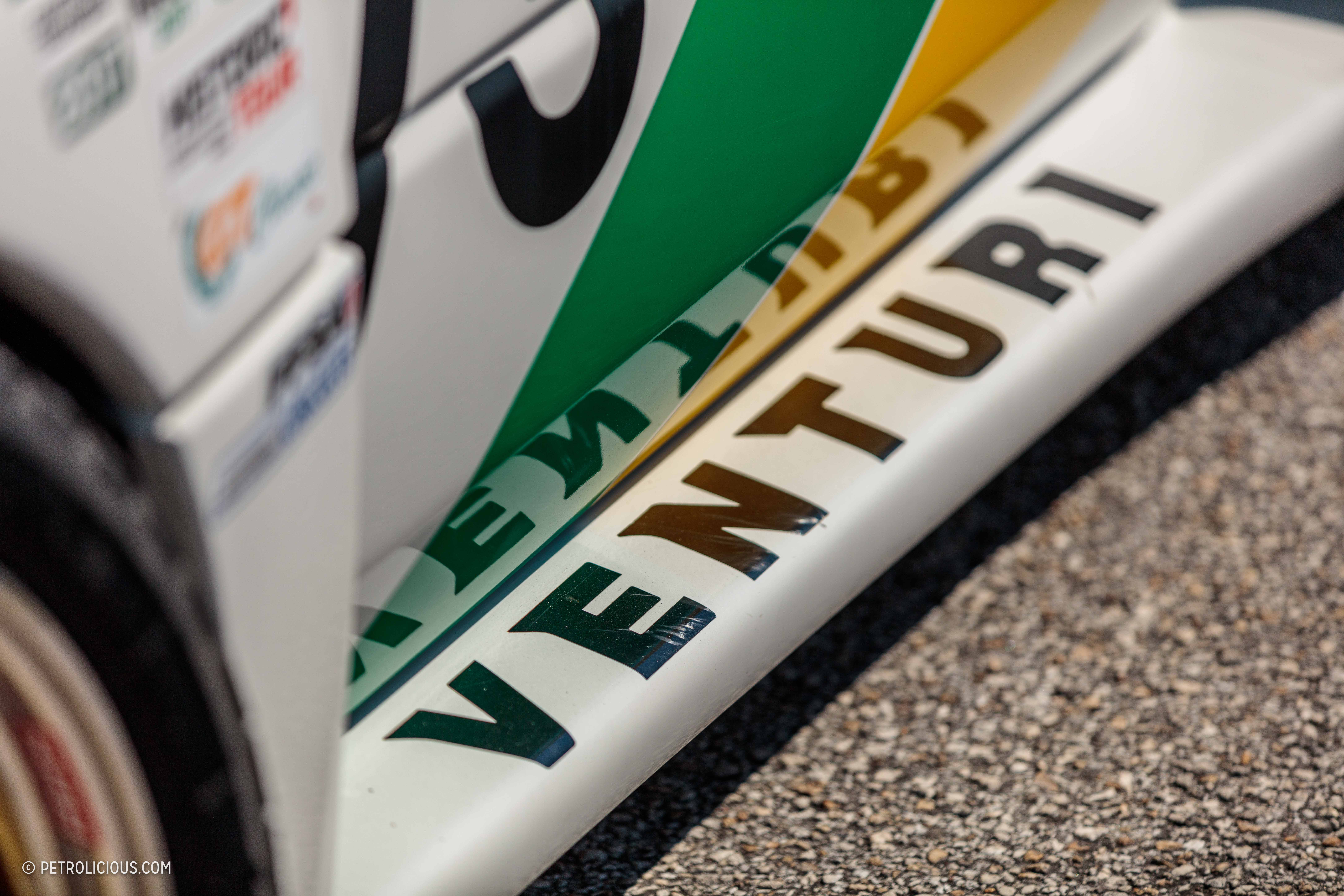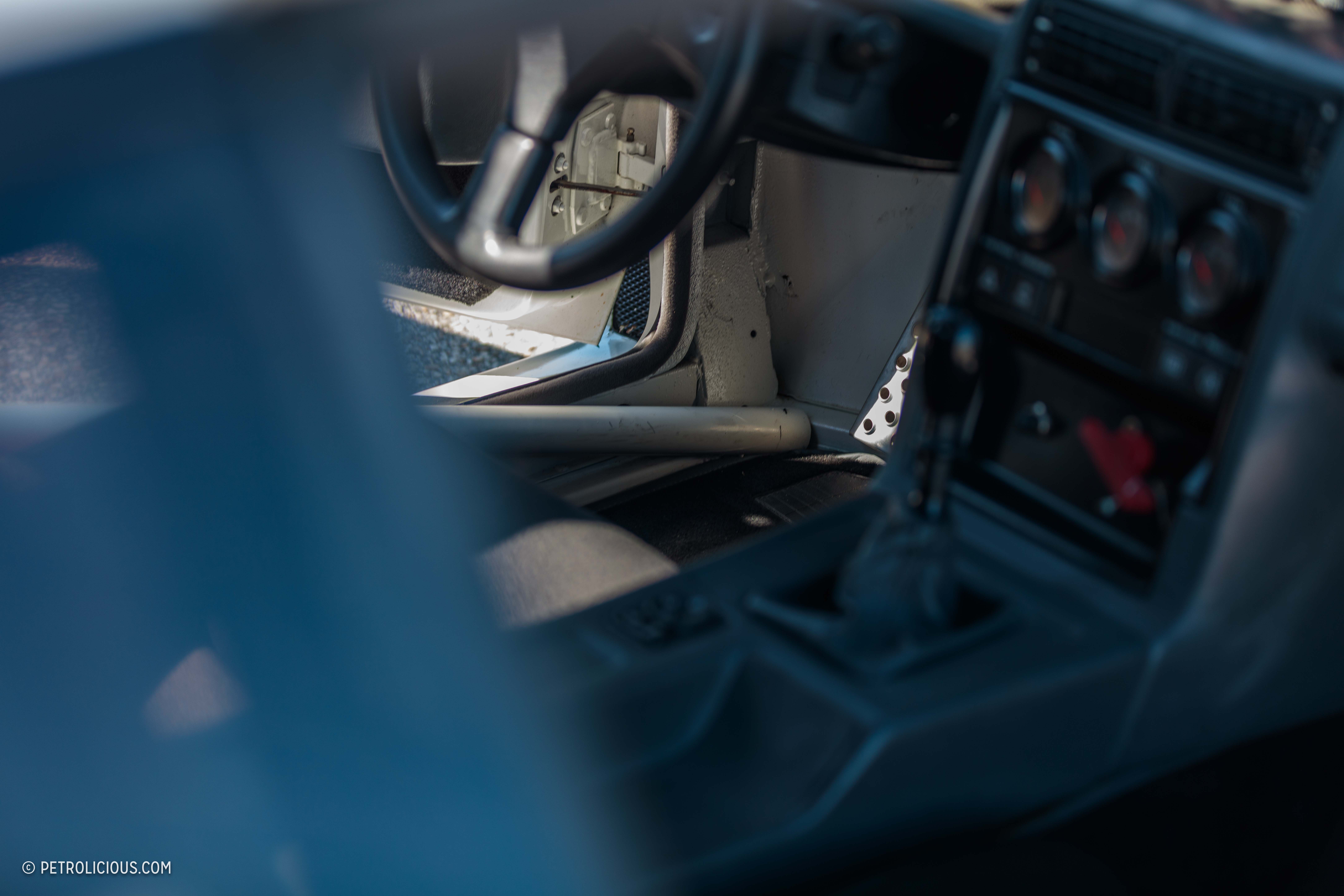From above, Spanish moss hung from the branches of the oak trees that lined the narrow roadway. Fan palms secured the real estate between the oaks and rustled slightly in the breeze. Together they formed a corridor of dark greens and browns speckled with points of sunlight that managed to poke through. The stillness of the scene was disrupted by the whines of turbochargers and straight-cut gears. The sound becomes an increasingly high-pitched growl, peak boost hits, and the wedge is hurled further into the distance. The vortices of dust and leaves were left swirling in its wake settle to the ground as two bright faraway orange fireballs punctuate the space between the car’s second and third gear.







At the end of the road, the blur of white, green, and yellow came to a stop in a small parking lot where a handful of fishermen and beachgoers looked on with curiosity. The door latches clicked open and Matthew Ivanhoe and Tom Hale of The Cultivated Collector stepped out and walked around the vehicle, laughing. “It’s fast! Not fast-for-an-old-car-fast… It’s properly fast!” Matt exclaimed. The properly fast car in question is a Venturi 400 Trophy, set to make its first public debut in the US. Still sporting its Yacco livery and fitted with gummy Michelin rain tires wrapped around gold BBS mags, it is presumably the exact same car that it was the last time it had been on the circuit.
Affectionately referred to by some as the “French F40,” the Venturi marque was a project born from two engineers who left their jobs at Heuliez to create machines that could compete with the top sports car manufacturers across Europe. Despite coming into existence during the onslaught of a global recession, Venturi managed an impressive list of accomplishments during its short tenure as a manufacturer.






The first cars weren’t powerhouses, but the Venturi 400 GT that came in the 1990s remains one of the fastest road-going cars to come from France, and it was also the first road car ever to feature carbon brakes as standard equipment. Venturi produced more racing than road car variants though, and the motorsport entries proved to be formidable competition against well-established marques at high-level competitions like the 24 Hours of Le Mans, 1000km of Paris, and 4 Hours Spa. And with the assistance of racer-turned-organizer Stéphane Ratel, a single-model racing series called the Venturi Gentlemen Drivers Trophy was formed as well.
Each of the vehicles in the Trophy had the same technical preparation to ensure that competition was on a level playing field, and the racing was as closely fought as you could hope for, and the six-race series was held on world-famous circuits to boot: Le Mans, Pau, Paul Ricard, Nürburgring, Magny-Cours, and Dijon.






The car pictured here is the 57th of 73 Venturi 400 Trophy models produced, and in 1992 it was used as a display vehicle during the Paris Motor Show. Shortly thereafter, it competed in the Trophy series. Beneath the white Kevlar and fiberglass composite clamshell, a three-liter PRV (Peugeot-Renault-Volvo) engine is fitted between the cabin and rear axle. Unlike the PRV engine that found its way into a host of vehicles between the mid-1970s to late 1980s though, this example has been treated to two turbos and and produces 408 horsepower and 391lb-ft of torque. Thanks to the lightweight bodywork and tube-and-box chassis, the Trophy weighs just 2425lbs.
Inside the cabin, there is little more than the essential controls, a roll cage around two racing seats, and a pair of five-point harnesses. A strip of carbon fiber reaches across the dashboard and houses a lonely tachometer with a redline marked off at 6500, a boost gauge, and separate gauges for oil temperature and pressure. Auxiliary gauges fill the space where a radio normally might, and a cluster of fuses and relays are exposed in carbon-fiber trim ahead of the passenger seat for quick access. Surprisingly, the entire dashboard, center console, and door cards are trimmed in grey Connolly leather.







Venturi gave customers the option to have the cars returned to the factory to be converted to road spec after the completion of the series, although the conversion did little more than add a speedometer and odometer, plastic door cards, and in some instances replaced the fixed covered headlights with pop-ups. It’s said that 13 Trophy-spec cars were converted, while the rest went on to continue to race in other series or were modified to be even more powerful track toys. Number 57 remains true to its original configuration though, and has since been a participant in a number of historic racing events. The number of series and demonstration events continue to grow each year (well, not so much this summer), and the majority of them include the Trophy as an eligible vehicle for one class or another.







After giving the Venturi a thorough shakedown, Matt reflected on his experience behind the wheel. “One of my favorite features of the car is the gearbox,” he said with a broad smile, “it’s full straight-cut gears, but it’s not like a Hewland or something like that where it’s just howling at you. You know it’s a straight-cut gearbox but it’s not screaming your ears off, it’s something you can drive with no hearing protection and not be driven completely insane by the sound.” Despite the similarities in weight and 0-60 times between the F40 and this so-called “French version,” Matthew describes the Venturi as feeling “more nimble, more alive, more point-and-shoot… You feel the difference in setup, in intention. At the end of the day, the F40 is still a road car. The Venturi is definitely 100% a race car.”
“It’s something that in-person just has such presence and this aura about it that people can see and recognize, then you get in it and drive it. Then you realize it makes good on every promise that its looks make, and that’s when you know it’s something really special.”






















































